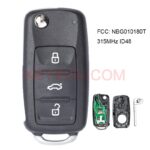Machine learning is rapidly changing many industries, but when it comes to car repairs, especially concerning onboard computers, the question of programming is crucial. If you’re diving into automotive repairs, particularly dealing with used computer replacements, understanding the programming needs is essential. Let’s explore whether used car computers need programming and what that entails.
Understanding Car Computers
Modern vehicles are sophisticated machines controlled by numerous computers, often referred to as Electronic Control Units (ECUs) or Powertrain Control Modules (PCMs). These computers manage everything from engine performance and transmission to braking systems and infotainment. They are programmed with specific software to operate the vehicle optimally and communicate with other systems.
The Necessity of Programming Used Car Computers
When replacing a car computer, especially with a used one, programming is very often necessary. Here’s why:
VIN Matching and Security
Modern car computers are often linked to the Vehicle Identification Number (VIN) for security and anti-theft reasons. A used computer from another vehicle will have a different VIN programmed into it. Simply swapping it in can lead to several issues:
- Starting Problems: The car might not start at all because the immobilizer system, which verifies the VIN, will recognize a mismatch.
- System Malfunctions: Even if the car starts, other systems that rely on VIN verification might not function correctly.
- Diagnostic Errors: Diagnostic tools might report VIN mismatch errors, making troubleshooting difficult.
Programming the used computer to match the VIN of your car is crucial to ensure compatibility and proper functioning with the vehicle’s security and diagnostic systems.
Software and Configuration Differences
Even if the used computer is the same part number, there can be software and configuration differences. Car manufacturers frequently update software, and different trim levels or options in vehicles can require specific computer configurations.
- Performance Issues: Mismatched software can lead to suboptimal engine or transmission performance.
- Feature Incompatibility: Features like cruise control, specific sensor integrations, or even air conditioning might not work if the software is not correctly configured for your vehicle.
- Error Codes: Incorrect software can trigger various error codes, complicating diagnostics.
Programming ensures that the used computer is flashed with the correct software version and configured to match the specific options and requirements of your vehicle.
Immobilizer and Key Programming
Many used computers, especially engine and transmission control units, are integral to the vehicle’s immobilizer system. This system is designed to prevent theft by requiring a coded key to start the engine.
- Immobilizer Activation: If a used computer isn’t correctly programmed, it can activate the immobilizer, preventing the car from starting.
- Key Mismatch: The used computer needs to be paired with your car’s existing keys or have new keys programmed to work with the system.
Programming often involves security procedures to adapt the used computer to the car’s immobilizer system and ensure that the car recognizes the keys.
The Programming Process
Programming a used car computer is not a simple plug-and-play task. It typically requires specialized tools and knowledge. Here’s a general overview of the process:
- Diagnostic Scan: First, a diagnostic scan of the vehicle is performed to identify the faulty computer and any related issues.
- Used Computer Installation: The used computer is physically installed in place of the old one.
- VIN Programming: Using diagnostic tools, the VIN of the vehicle is programmed into the used computer. This step is often critical for security and system integration.
- Software Flashing/Updating: The computer might need to be flashed with the correct software. This can involve downloading software from the manufacturer or using pre-loaded software in professional tools.
- Configuration and Calibration: Depending on the computer and the vehicle, configuration and calibration steps may be necessary. This can include setting parameters for engine type, transmission, and vehicle options.
- Immobilizer and Key Adaptation: Security procedures are performed to adapt the immobilizer system to the new computer and program the car’s keys to work with it.
- Verification and Testing: Finally, a thorough verification and testing process is carried out to ensure that the computer is functioning correctly and communicating with all other vehicle systems.
This process often requires:
- Professional Diagnostic Tools: Tools capable of ECU programming, VIN writing, and security access.
- Software and Firmware: Access to the correct software versions and firmware for the specific vehicle and computer.
- Expertise: Knowledge of automotive electronics, diagnostic procedures, and programming protocols.
When is Programming Not Needed?
In rare cases, programming might not be necessary. This is typically limited to very basic or older vehicles without sophisticated security or system integration. However, in most modern cars, especially those built in the last two decades, programming is almost always required when replacing a computer with a used unit.
Risks of Not Programming
Attempting to use a used car computer without proper programming can lead to significant problems:
- Vehicle Inoperability: The car might not start or run correctly.
- System Damage: Incompatibility can potentially damage other electronic systems.
- Security Issues: Improperly programmed computers can create security vulnerabilities.
- Increased Repair Costs: Trying to fix issues caused by incorrect installation and lack of programming can escalate repair costs significantly.
Conclusion
In conclusion, yes, used car computers very often need to be programmed to work correctly in a different vehicle. This programming is crucial for VIN matching, software compatibility, immobilizer adaptation, and overall system integration. While machine learning is advancing automotive technology in many ways, the fundamental need for correct programming when dealing with used car computers remains a critical aspect of vehicle repair and maintenance. For reliable and safe repairs, especially involving computer replacements, professional programming services and diagnostic tools are highly recommended.
